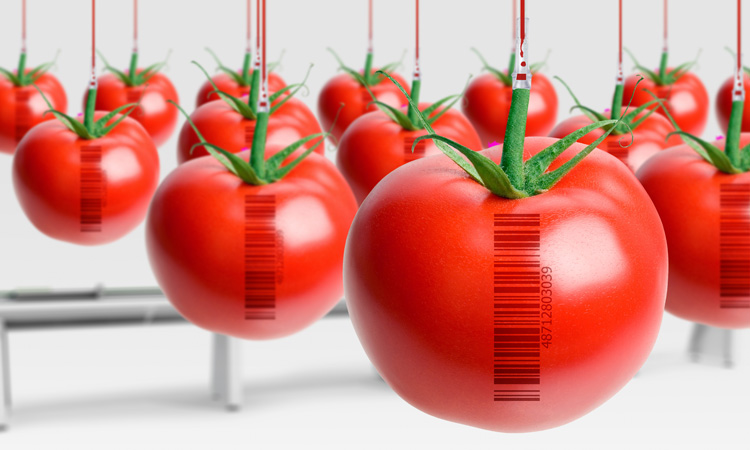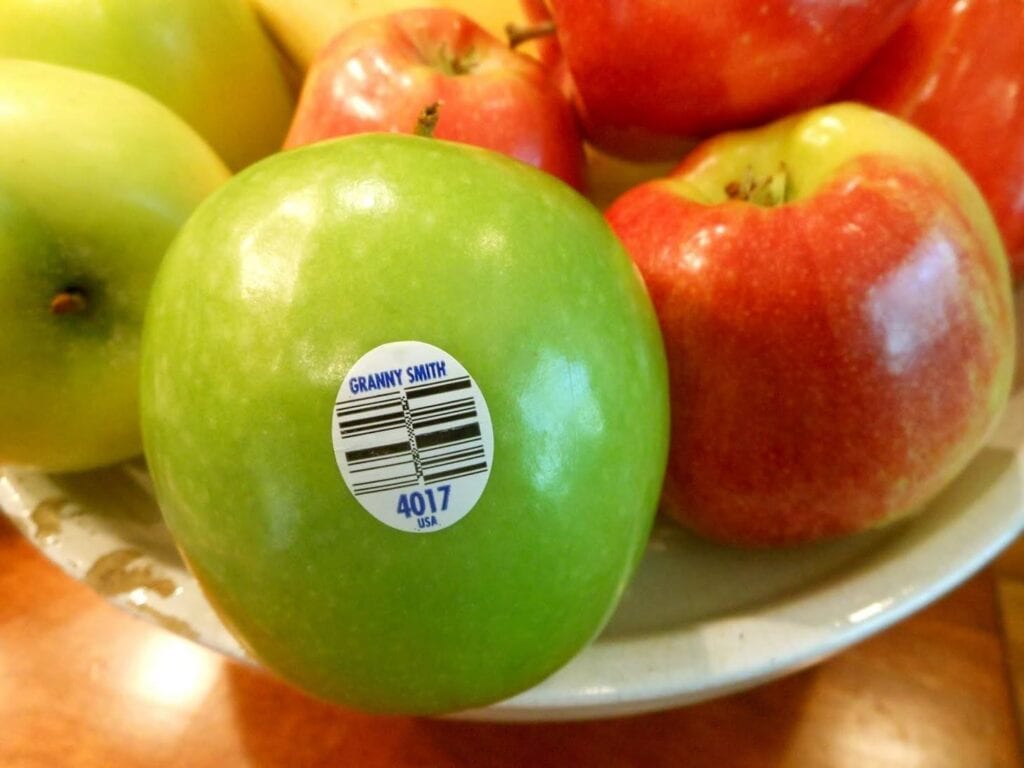
Do you look for the four or five-digit code on your products to help avoid GMO foods? You’ll find lots of advice online telling you to do just that, but there’s one problem – it’s pretty much complete nonsense.
Many sites online will tell you to look for this code in order to know what you’re buying. Find a number that starts with a 9, for instance, and the food is organic. Find a number that starts with an 8, and it’s GMO.
While it’s true that fresh produce in supermarkets is labeled with a code to help identify it, this code is meant to help retailers with inventory, pricing and identification. The use of that 8 or 9 is completely optional.

Suppliers can choose to label their produce as organic or GMO. In the case of organics, they will obviously choose to add that extra digit since consumers tend to pay extra and seek out organic produce. In the case of GMO foods, it is incredibly rare for any supplier to add the 8 to the front of the code — whether the food is GMO or not.
As Jeffrey Smith of the Huffington Post reported:
“Let’s put a rumor to rest. No, the 5-digit PLU codes on produce do not tell you what is genetically modified or natural. This urban legend has circulated long enough, even on the best of websites. It’s time to take it down.”
He continues:
“Those that run PLU-universe figured that someday some retailer might want to distinguish between a GMO and a non-GMO for price or inventory purposes. So they created a convention of 5 digits starting with an 8, just in case it catches on. But it hasn’t. No one uses that number 8 as far as we can tell. And why would they? Most Americans say they would avoid GMOs if they were labeled.“
I called the International Federation for Produce Standards, which oversees the numeric code system, to verify this. An employee confirmed that suppliers can choose to leave the 8 off. She told me, “You could. It’s a voluntary system. But if you see the 8 then you know it’s a GMO item.”
For more information about the PLU system, see this guide put out by the IFPS.
So how can you avoid GMO foods? Four steps you can take are:
- Buy organic, since organic foods cannot contain GMO’s.
- Look for products labeled “GMO-free.”
- Avoid the “big four” ingredients most likely to be GMO: corn, soybeans, cottonseed and canola unless they are marked organic or GMO-free.
In our family, we pay extra for organic corn in stores and purchase it fresh from a farmer out of Windom who sells at the Worthington Farmers’ Market on Tuesday afternoons. At $4 a dozen ears for heirloom, Japanese and organic varieties, it’s well worth the small price to us. We also pay extra for organic corn products such as tortilla chips, avoid any soy products that are not labeled organic or non-GMO, and rely on our garden and trusted suppliers as much as possible.
Remember, knowledge is power, but only if you’re using accurate knowledge! Forget about looking for tiny numbers on your products and find better ways to know just what you’re eating.
Your best bet is to go to the local Farmer’s Market and buying directly from the source. If you have any questions about whether a product is GMO or not, simply ask them. Unless an item is specifically labeled as organic at the grocery store, then chances are, anything that isn’t labeled as organic is most likely GMO or a hybrid. That includes many of the grains that are in your cereals.
If the farmer is unsure, then simply look at the produce. GMO’s are made to be flawless as well as bigger and brighter than their organic competition. Does the produce look abnormally large or bright? Does the products have any minor flaws?
One last thing to keep in mind is that “natural” DOES NOT mean “organic”!!!




